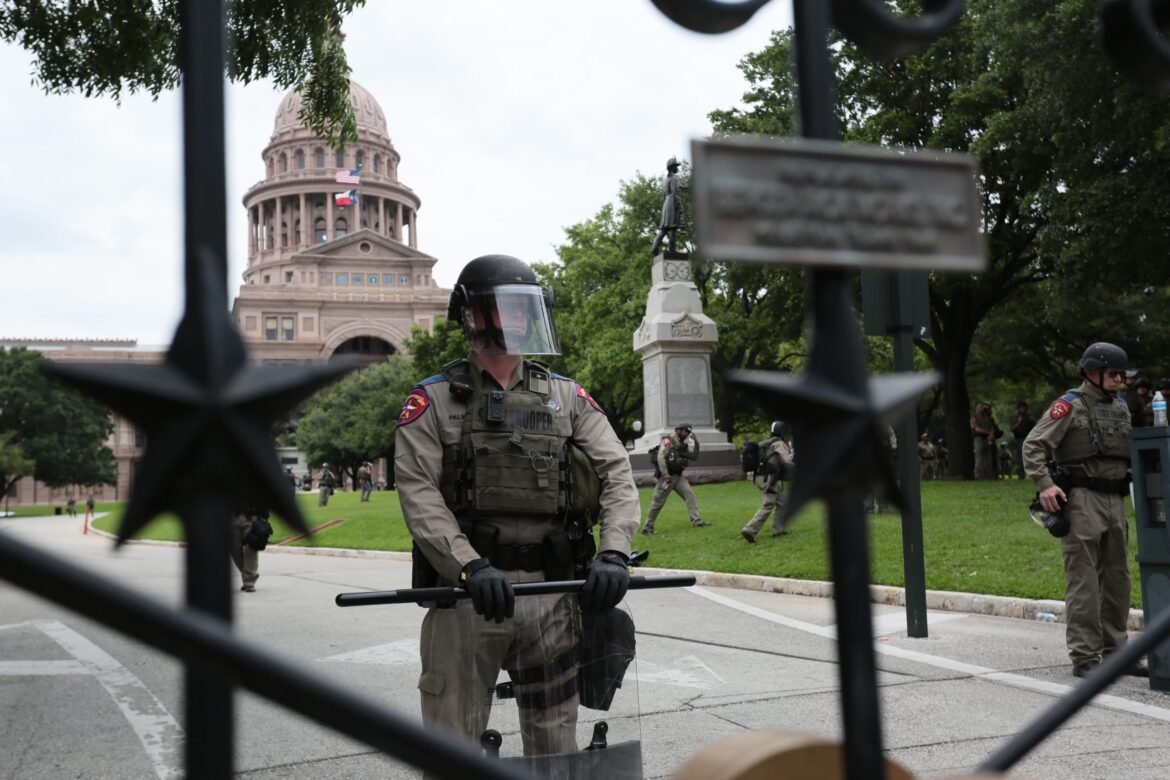Editor’s Note: This article was created in collaboration with the Pulitzer Center’s AI Accountability Network.
The Expansion of AI Surveillance by the Texas Department of Public Safety
In recent years, the Texas Department of Public Safety (DPS) has expanded its surveillance capabilities significantly, fueled by advancements in artificial intelligence (AI) technology. These developments fall under Governor Greg Abbott’s Operation Lone Star, a substantial $11 billion initiative aimed at bolstering border security and intensifying law enforcement activities along the Texas-Mexico border.
Surveillance Infrastructure and AI Capabilities
The DPS has enhanced its array of surveillance tools, which previously included spy planes, drones, and a network of wildlife cameras strategically positioned in border areas. Now, it also utilizes AI-driven software for intelligence collection and analysis. Recent disclosures from DPS reveal multi-million dollar investments in various AI technologies capable of:
- Facial recognition through extensive image databases.
- Tracking vehicles using automatic license plate recognition.
- Intercepting phone conversations within correctional facilities.
- Searching data from seized electronic devices.
- Tracking cell phone locations without warrants.
This technological expansion is occurring amid ongoing discussions in the Texas legislature regarding the regulation of AI, with uncertainty about whether new laws will impose restrictions on DPS’s use of these tools for law enforcement purposes.
Legislation and Oversight Initiatives
In an effort to address these concerns, Texas lawmakers established an AI advisory council to review the deployment of AI across state agencies, requiring them to maintain an inventory of their automated systems. DPS’s inventory has provided insight into its AI capabilities, which have been acquired as part of efforts to address border security challenges and counter potential domestic threats.
For instance, one of the pivotal tools acquired by DPS is Tangles, an AI-driven intelligence software that scrapes data from social media, the dark web, and more, featuring capabilities for cell phone tracking. Since its introduction in 2021, Tangles has reportedly cost the agency over $900,000, with a recent contract extending its use for five more years at a value of $5.3 million.
Concerns Over Civil Liberties
The expansion of DPS’s surveillance initiatives has raised alarms among civil liberties advocates. Critics argue that tools like Tangles could infringe upon Fourth Amendment protections against unreasonable searches and surveillance, especially as they allow monitoring without appropriate judicial oversight. Savannah Kumar, a staff attorney at the ACLU of Texas, articulated concerns about the erosion of privacy rights: “Many of these technologies are eroding that reasonable expectation of privacy that people have, and … leading to this police surveillance state,” Kumar stated.
Facial Recognition and Data Extraction Technologies
In addition to Tangles, DPS employs biometric facial recognition software from Clearview AI, which enables law enforcement to generate leads based on extensive databases of publicly available images. Clearview AI’s solutions have been criticized for their lack of consent and potential biases in identification accuracy, particularly concerning racial disparities in error rates. A DPS contract with Clearview AI, valued at $1.2 million, extends its use into the next decade.
Moreover, DPS utilizes Cellebrite, a tool designed to extract and analyze data from mobile devices, often bypassing traditional security measures. Another substantial investment is in automatic license plate readers, with DPS contracting Motorola Solutions for access to its LEARN database. With numerous license plate reader systems operational across Texas, the potential for widespread tracking of individuals and vehicles is substantial.
The Drawbridge Initiative and Evolving Technology
One of the more controversial aspects of this surveillance architecture is Operation Drawbridge, established in the early 2000s to capitalize on wildlife cameras for border monitoring. By 2023, a contract was awarded to Deloitte Consulting for the development of AI systems capable of automating image processing from these cameras, classifying objects, and potentially predicting movements of persons of interest based on historical data.
Legislative Developments in AI Regulation
As the legislative session unfolds, bills have been introduced aimed at regulating the deployment of AI technology in Texas, particularly concerning its use by law enforcement. House Bill 1709, proposed by Representative Giovanni Capriglione, sought to create comprehensive regulations, but subsequent revisions have diluted many initial protections aimed at safeguarding civil liberties. A revised version, House Bill 149, continues to permit the use of facial recognition by government entities under certain conditions.
Public Response and Future Actions
The pursuit of AI-driven surveillance methods has ignited discussions across the political spectrum, with voices from both ends expressing unease about the implications for individual privacy and civil rights. Advocates from various organizations underscore the importance of ensuring that AI technologies do not transform the landscape into a surveillance-heavy environment devoid of accountability.
Conclusion
The Texas Department of Public Safety’s increased reliance on AI technologies for surveillance and policing raises critical questions about privacy, oversight, and the balance between public safety and civil liberties. As state lawmakers navigate the complexities of regulating such powerful tools, the ongoing dialogue surrounding individual rights in the face of sophisticated surveillance continues to evolve.
For further insights, we encourage those involved in law enforcement, public defense, and civil liberties to contribute to ongoing discussions about AI’s role in policing and public safety.

